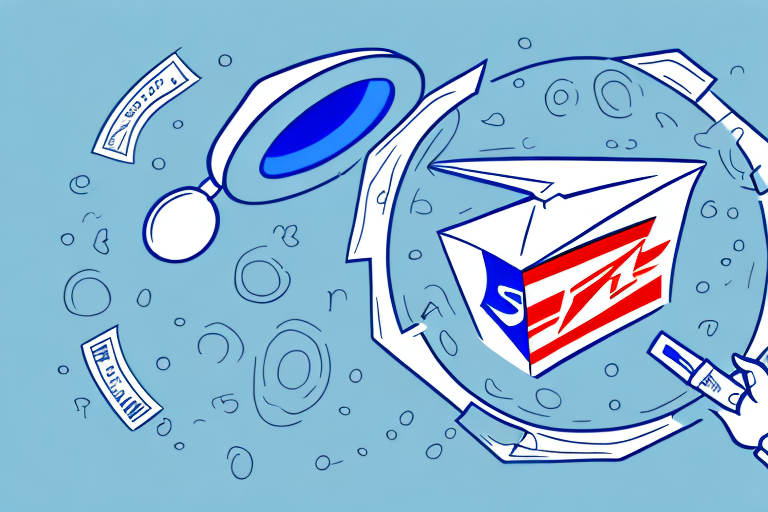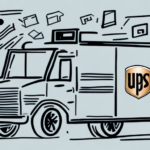Understanding USPS Insurance for Your Packages
Sending packages through the United States Postal Service (USPS) is a convenient and reliable way to deliver your items. However, accidents can occur during transit, making it essential to understand USPS insurance policies. This article provides an in-depth analysis of USPS insurance coverage and answers the question: How do I know if my USPS package has insurance?
What is USPS Insurance?
USPS insurance is a protection service that reimburses customers up to the declared value of their package if it is lost or damaged during transit. Unlike USPS tracking, which provides information on the package’s location and delivery status, insurance covers the financial value of the package if something goes wrong.
Insurance is available for various mail classes, including Priority Mail, First-Class Package Service, and Priority Mail Express.
Types of USPS Insurance Coverage
USPS offers different levels of insurance coverage based on the declared value of the package. Below is a table outlining the coverage amounts and associated costs:
| Declared Value | Coverage Cost | Eligible Mail Classes |
|---|---|---|
| $50 | Free | First-Class Package Service, Priority Mail |
| $100 to $5,000 | $1.00 for every $100 | Priority Mail, Priority Mail Express |
| Up to $5,000 | Additional fees apply | Priority Mail Express |
Note that USPS insurance only covers the declared value of the package. If the actual value exceeds the declared amount, you may not receive full reimbursement for any loss or damage.
Eligible Items for USPS Insurance
Most items sent through USPS are eligible for insurance coverage, provided they are not on the prohibited items list. Examples of prohibited items include explosives, firearms, and hazardous materials. Additionally, items valued over $5,000 cannot be insured through USPS.
Valuable items such as jewelry and precious metals have limited coverage under USPS insurance. To fully insure these items, consider purchasing additional coverage from a third-party provider.
For a comprehensive list of prohibited items and more details on eligibility, visit the USPS Insurance Information page.
How to Purchase USPS Insurance
Purchasing USPS insurance is straightforward. You can add insurance to your package at the time of shipping by selecting the desired coverage level and paying the corresponding fee. This can be done:
- Online through the USPS Click-N-Ship service.
- At a USPS retail location when shipping in person.
Remember, insurance must be purchased before the package is shipped; it cannot be added afterward.
Cost of USPS Insurance
The cost of USPS insurance varies based on the declared value of the package and the mail class selected. Generally, the insurance cost is affordable, making it a cost-effective way to protect valuable items during transit. For example:
- First-Class Package Service: Insurance up to $50 is free.
- Priority Mail: Insurance costs $1.00 for every $100 of coverage beyond the initial $50.
- Priority Mail Express: Higher insurance limits are available with additional fees.
For the most accurate and up-to-date insurance rates, refer to the USPS Insurance Rates page.
Filing a Claim for a Damaged or Lost Package
If your package is lost or damaged, you can file a claim with USPS to seek reimbursement. Follow these steps to file a claim:
- Gather necessary documentation, such as receipts, photographs of the damage, and proof of the package’s value.
- Submit the claim online through the USPS Claims Page or visit your local post office.
- Wait for USPS to review and process your claim. This may take several weeks depending on the complexity and volume of claims.
Ensure all information provided is accurate and complete to avoid delays in processing your claim.
Tips for Proper Packaging to Ensure Insurance Coverage
Proper packaging is crucial to protect your items and ensure they are eligible for insurance coverage. Here are some tips:
- Use a sturdy box: Choose a box that is the right size for your item to prevent movement during transit.
- Protect fragile items: Wrap items in bubble wrap or other cushioning materials.
- Fill empty space: Use packing peanuts or crumpled paper to fill any gaps in the box.
- Seal securely: Use strong packing tape to seal all openings of the box.
- Label appropriately: Mark the box with “Fragile” or “Handle with Care” if necessary.
- Include documentation: Place a packing slip or invoice inside the box as proof of shipment and value.
Additionally, consider the weather conditions during shipping. For items sensitive to temperature or humidity, use insulated liners or desiccant packets to protect against potential damage.
Refund Timeline for USPS Insurance Claims
The time it takes to receive a refund from a USPS insurance claim can vary based on several factors:
- Documentation: Complete and accurate documentation can speed up the claim process.
- Claim Volume: High volumes, especially during peak seasons like holidays, may delay processing times.
- Claim Complexity: More complex claims may require additional review time.
Generally, refunds can take from a few days to several weeks. It's important to be patient and follow up with USPS if necessary to ensure your claim is being processed.
Comparing USPS Insurance with Private Shipping Insurance Options
While USPS insurance is affordable and widely accessible, private shipping companies like FedEx and UPS offer alternative insurance options that might better suit specific needs:
- Coverage Limits: Private carriers may offer higher insurance limits, which is beneficial for high-value items.
- Additional Services: Services such as enhanced tracking and expedited shipping may be available.
- Customer Service: Some users report more responsive customer service with private carriers.
When choosing between USPS and private insurance, consider the value of your package, the level of coverage needed, and the additional services that may benefit your shipment. Reviewing customer experiences and comparing policies can help you make an informed decision.
Common Misconceptions About USPS Insurance
There are several misconceptions surrounding USPS insurance that can lead to misunderstandings:
- Automatic Coverage: Not all USPS packages are automatically insured. Insurance must be purchased separately.
- Unlimited Coverage: USPS insurance has limits based on the declared value. It does not cover the full replacement cost for high-value items unless declared and paid for accordingly.
- All Types of Damage: USPS insurance covers loss and certain types of damage but may not cover all forms of damage, especially if caused by improper packaging.
Understanding the specific terms and conditions of USPS insurance is crucial to ensuring your packages are adequately protected.
Best Practices for Ensuring Adequate Insurance Coverage
To maximize the benefits of USPS insurance, follow these best practices:
- Accurately Declare Value: Ensure the declared value reflects the true worth of the item to receive appropriate coverage.
- Proper Packaging: Use high-quality packaging materials to prevent damage and ensure eligibility for insurance claims.
- Choose the Right Mail Class: Select a mail class that offers the level of insurance coverage needed for your package.
- Keep Documentation: Maintain records of your shipments, including receipts and photographs, to support any potential claims.
- Review Policy Terms: Familiarize yourself with the terms, conditions, and exclusions of USPS insurance policies.
By adhering to these practices, you can ensure your packages are well-protected and that you are prepared in the event of loss or damage.
Conclusion
Understanding USPS insurance is vital for anyone looking to send packages securely and with peace of mind. By knowing how to purchase insurance, what items are eligible, and how to file a claim, you can protect your valuable shipments effectively. Additionally, comparing USPS insurance with private options allows you to choose the best coverage for your specific needs.
Always ensure your packages are properly declared, packaged, and insured to minimize risks during transit. For more detailed information, visit the official USPS website.




















